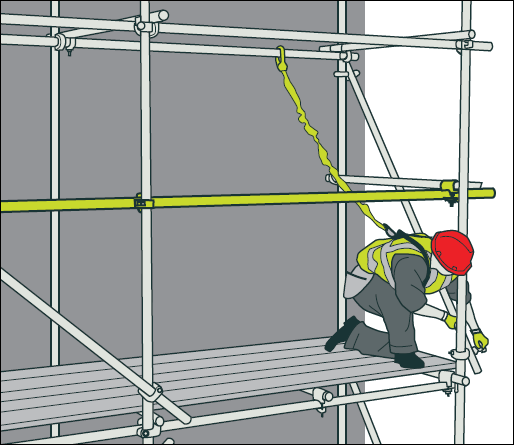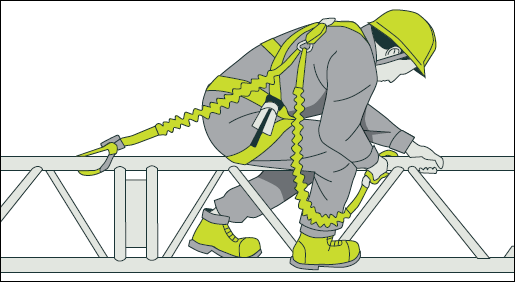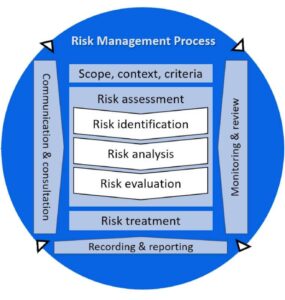What are fall protection systems for scaffolders

What are fall protection systems for scaffolders are Fall prevention systems prevent a fall from occurring? They are adored to fall arrest systems, which stop a fall at one point, however, don’t really counteract harm. These fall protection systems frameworks require a high level of supervision & user competency.
Fall arrest harnesses with appropriate attachment equipment & anchorage for the task ought to be worn if there is any danger of a fall, or whenever required for rescue.
In all situation’s workers should be hooked on where there is a risk of a fall.
Fall protection systems should be appropriate for the intended task. Scaffolders must be trained & competent in how to use the fall protection system safely. All equipment must be inspected regularly on a monthly basis by a competent person and before each use. What are fall protection systems for scaffolders

If a worker falls, the arresting force on the safety harness must be under 6 kn (610 kg). Lanyards must be suitable for the use, and to the size of the worker. Anchor points must be reasonable and ready to take the force of someone falling. There must be procedures & an emergency plan in place describing in detail how to rescue worker who falls from height. Individuals using fall arrest systems must not be allowed to work alone.
What are fall protection systems for scaffolders Common risks in fall arrest systems
Fall arrest systems have dangers & limitations. It is necessary for a worker who has fallen to be rescued as soon as possible. Rescue procedures must be included in detail in an emergency plan before any scaffolding erection work takes place.
Risks associated with using fall arrest equipment
Lanyards that are too long can result in the scaffolder swinging down or back or striking the ground (pendulum effect).
The worker can be too light or too heavy for the shock absorber.
• a fall arrest system can come up short if inappropriate anchor points (not high enough or strong or too close to an edge) are used.
• a worker who has fallen and is suspended in a harness can build up a condition in which blood pooling in the legs can lead to death and loss of consciousness
• the rescue team rescuing a worker who has fallen can face risks to their own lives & safety. What are fall protection systems for scaffolders
• a worker can disconnect from the anchor points because his movement is restricted, limited, exposing him to the risk of a fall?
• a worker is not accurately connected to the attachment & the connection fails under the load.
• a slack horizontal line suddenly pulled by an individual who has overbalanced may pull others off balance too.
Types of fall protection systems
Personal fall protection systems enable an individual worker to be protected while work is undertaken while working at height. They must be appropriate for the intended work.
Fall restraint system prevents the worker from getting too near to someplace they could fall from.
Work positioning systems allow a worker to be stable while working hands-free.
Fall arrest systems catch an individual or a worker if they fall. They can be used with a life rail system & horizontal lifeline, which allow them horizontal movement while being hooked on.
These systems require a high level of supervision & competency. Workers must be fully trained in the use of fall arrest systems & safety harnesses. Ongoing competency should be demonstrated & assessed.
Fall restraint
A total restraint system prevents a worker from approaching an unprotected edge so they are not able to fall. If the system can be balanced so a worker can reach a position where they can fall, the system is known as a restraint method or technique & must be appraised as a fall arrest system.
Work positioning systems
A work positioning system is a system that enables a worker to work supported in a harness in tension so that a fall is prevented. Work positioning systems should be designed & set up to enable a worker to work safely & in reasonable comfort.
Fall arrest systems
Fall arrest systems are designed to hold & catch a person if they fall. They consist of a safety harness connected to an anchorage point. They don’t prevent the fall from happening.
The arresting force on the person must under 6 kn (610 kg). The lanyard must include an appropriate shock-absorbing device system with them.
The lanyard must be connected to the safety harness at the top dorsal (back) attachment or to the front chest attachment on the safety harness. The anchor point must be within easy reach but as high as possible. When working in fall arrest an individual must maintain 100% hook tie off at all times.
Collective fall arrest systems
Collective fall arrest systems contain industrial safety nets & soft-landing systems. They protect more than one worker at a time from falling.
Industrial safety nets
Industrial safety nets are sometimes utilized where it is not practicable to provide platforms or temporary guard railing for protection. Safety nets are attached to perimeter cords.
Each safety net will be labeled with the maximum fall distance the net has been made for (it is usually 1−6 m) & minimum clearance distance below the net.
Installing a safety net to a building structure or scaffold may require a design approved by a structural engineer as the impact loads applied to a safety net may require the supporting structure and scaffold to support these loads.
Using fall arrest systems
Harnesses
It is essential that the correct safety harness is chosen. A full-body harness should be properly worn by the user and should not be as tight the person can not push his hands below the webbings.
Lanyards
Lanyards connect the harness to an anchor point, a horizontal lifeline, a rail, or some other form of anchorage. Double or twin-tailed lanyards have an additional safety factor that allows the user to be connected to an anchor point by one or other of the tails at all times. An appropriate anchorage & lanyard must be utilized to suit the task & situation.
A scaffolder attached to an inertia reel to limit the distance of fall
What are fall protection systems for scaffolders Fall arrest devices
Type 1 fall protection systems/arrest devices i.e. Inertia lock rope grab
A type 1 fall arrest system has a unit that slides here and there an anchorage line & bolts locks onto the line if an individual falls. Note that the point of angle of the use must be in accordance with the manufacturers’ directions, as failure can result by using horizontally.
Type 1 fall arrest devices are commonly set up each time they are required yet in certain circumstances, permanent lines made of tempered steel or a non-destructive material might be attached to building components, for example, stacks, towers, etc.
The lanyard used with a safety harness and type 1 fall arrest system must not be longer than 2 m. In the event that it is used with a vertical line the lanyard and fall arrest system must not be more than 300m
The anchor point on the line must be above shoulder height & be fastened with as little slack as possible.
Types 2 & 3 fall arrest devices (inertia reels)
Types 2 & 3 fall arrest system devices i.e. Inertia reels both are spring-loaded, retractable device reels that are fixed to an anchor point which is provided. A wire rope or pulls out and retracts the cable automatically as the individual moves away from the reel and comes back towards the reel. The type 3 device can also be used to rescue an individual up.
Types 2 7 3 fall arrest devices are not used with lanyards and should be attached directly to the attachment of the fall arrest of the safety harness.






